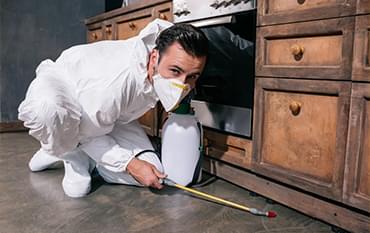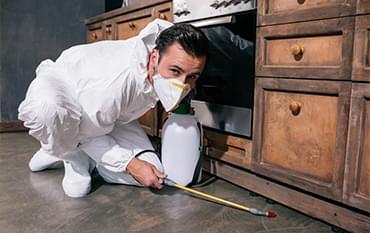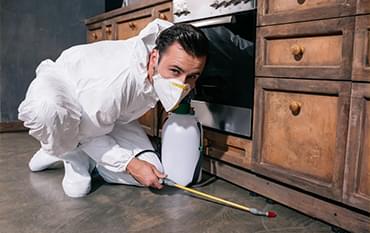Mosquitoes are dangerous pests for human beings, mosquito bites & spread various diseases.
What are the major mosquitoes found in India?
Culex, Aedes, Anopheles
Which diseases are spread by Culex?
Elephantiasis ie swollen leg is a disease spread by Culex female mosquitoes
Which diseases are spread by Aedes?
Dengue viruses spread to humans through bites of infected Aedes species mosquitoes
Which diseases are spread by Anopheles?
Dengue viruses spread to humans through bites of infected female Anophele mosquitoes
The best approach to controlling mosquitoes takes advantage of every life stage of a mosquito to achieve control, using a unified approach referred to as integrated pest management (IPM).
Integrated Pest Management by Pest Relief India
PRI uses a variety of pest management techniques that focus on pest prevention, pest reduction, and the elimination of conditions that lead to pest infestations. IPM programs also rely heavily on resident education and pest monitoring.
A successful IPM strategy can use pesticides. IPM uses a combination of ways to control mosquito populations with decisions based on surveillance, such as keeping track or counting of the numbers and types of mosquitoes in an area. Surveillance is a critical component to any successful IPM program because the results from the surveillance will help determine the appropriate response to an infestation. Extensive infestations, or those where disease is present, merit a different response than will lower levels of infestation.
A successful integrated mosquito control strategy includes several tactics to eliminate mosquitoes and their habitat. Four critical tactics include:
1. Remove Mosquito Habitats
An important part of mosquito control around homes is making sure that mosquitoes don't have a place to lay their eggs. Because mosquitoes need water for two stages of their life cycle, it's important to monitor stranded water sources.
- Get rid of standing stranded water in rain gutters, old tires, buckets, plastic covers, toys or any other container where mosquitoes can breed.
- Empty and change water in bird baths, fountains, wading pools, rain barrels and potted plant trays at least once a week to eliminate potential mosquito habitats.
- Drain temporary pools of water or fill with dirt.
- Keep swimming pool water treated and circulating.
2. Creating Structural Barriers
Because Aedes mosquitoes frequently bite indoors, using structural barriers is an important way to reduce the incidence of bites. Examples of structural barriers include:
- Install window and door screens if they are not already in place.
- Cover all gaps in walls, doors and windows to prevent mosquitoes from entering.
- Make sure windows and door screens are "bug tight."
- PRI technical executive advices to install Mosquito Net which is best ways to prevent mosquitoes, as they form a physical and chemical barrier against mosquitoes. Mosquitoes are not only blocked by the netting, but also killed by the insecticide coating by PRI
3. Anti Larval Treatment
The greatest impact on mosquito populations will occur when they are concentrated, immobile and accessible. This emphasis focuses on habitat management and controlling the immature stages (egg, larva, and pupa) before the mosquitoes emerge as adults. This approach maximizes the effectiveness of pesticide application and minimizes the use of widespread pesticide application. Larvicides target larvae in the breeding habitat before they can mature into adult mosquitoes and disperse. Larvicide treatment of breeding habitats helps reduce the adult mosquito population in nearby areas.
Aedes spp mosquitoes can use natural locations or habitats (for example tree holes and crevices in plants) and artificial containers with water to lay their eggs. They lay eggs during the day in water containing organic material (e.g., decaying leaves, algae, etc.) in containers with wide openings. They prefer dark-colored containers located in the shade. Other sites where they may lay their eggs include: old tyres, buckets, toys, potted plant trays and saucers, plastic covers and even places as small as bottle caps.
Egg and larva interventions are generally the most effective, least costly, way to control mosquitoes. However, these interventions are unlikely to be 100% effective, especially for mosquitoes like the Aedes spp that breed in varied and scattered locations. In these cases, eliminating or treating all or even most standing stranded water can be nearly impossible. Successful control efforts will need to supplement habitat removal with other means of control.
4. Adult Mosquitoes Treatment
Registered pesticide is one of the fastest and best options to combat an outbreak of mosquito-borne disease being transmitted by adult mosquitoes. The pesticides registered for this use are known as adulticides. Adulticides are used by sprayers.
Fogging: The adulticidal ( Spraying ) treatment can be supplemented by fogging with a suitable chemical during dusky hours when mosquito/flying insect activity is maximum.



